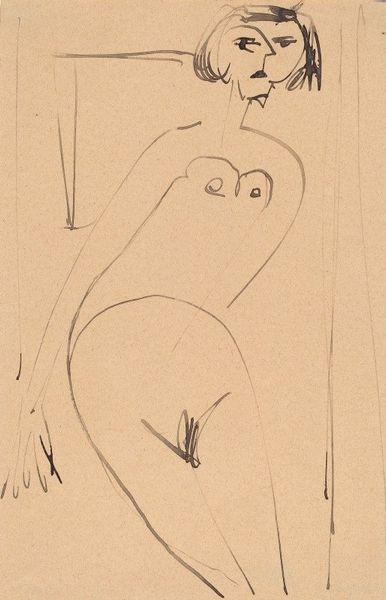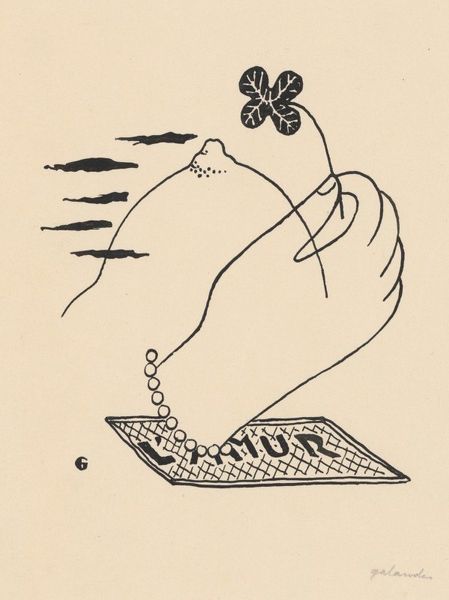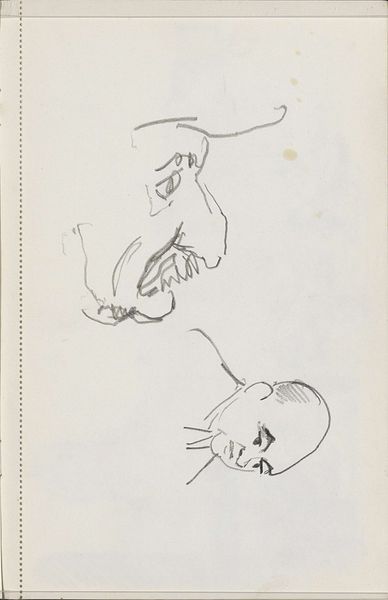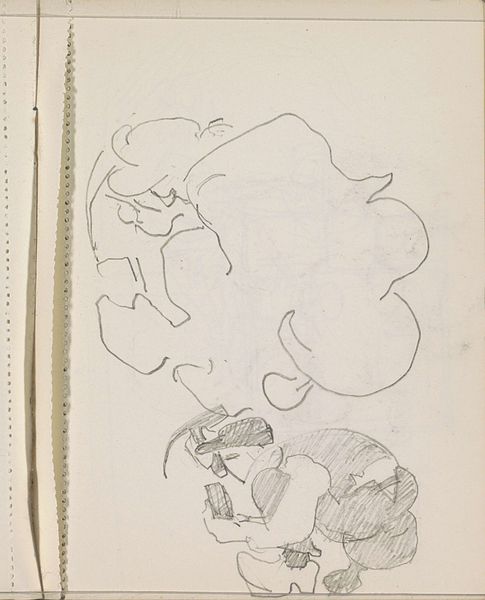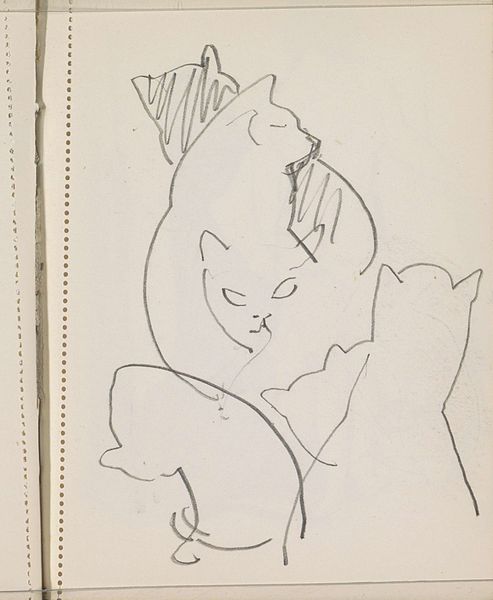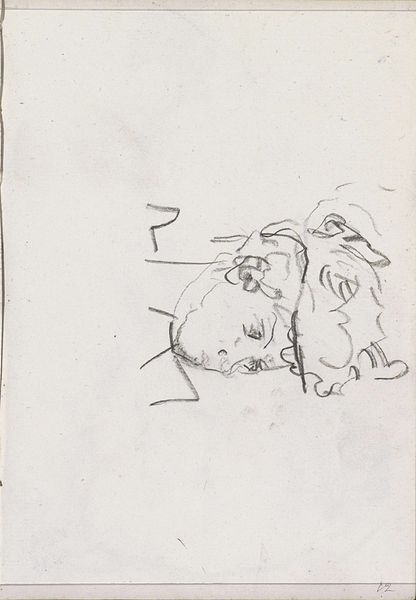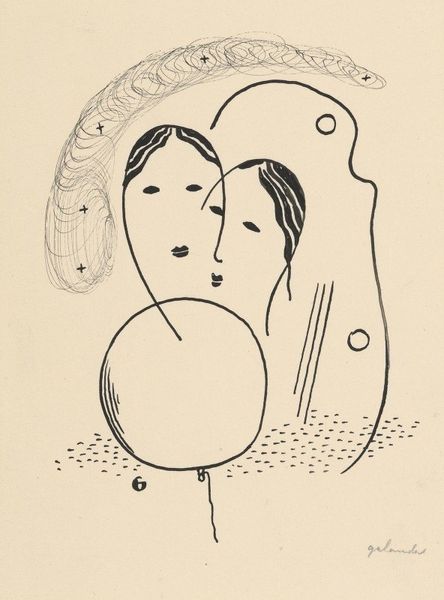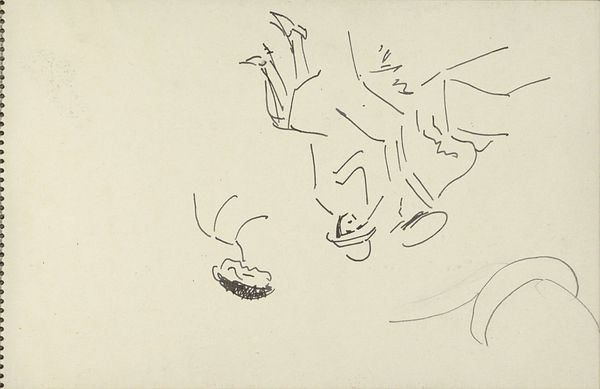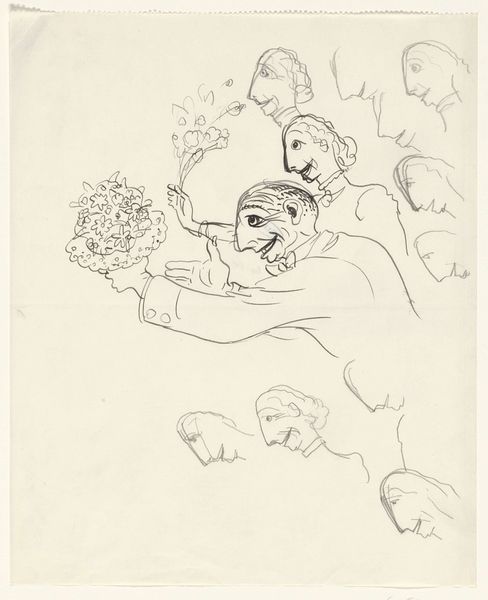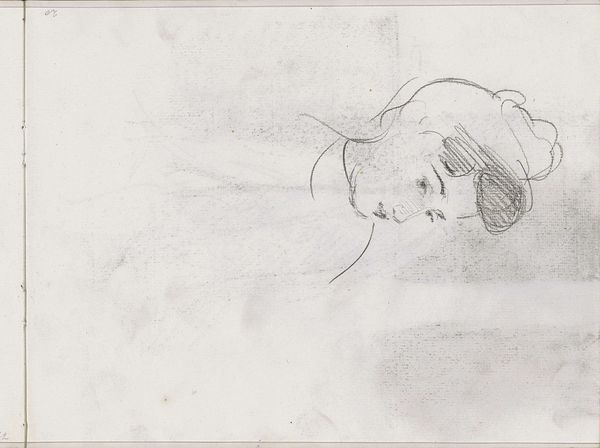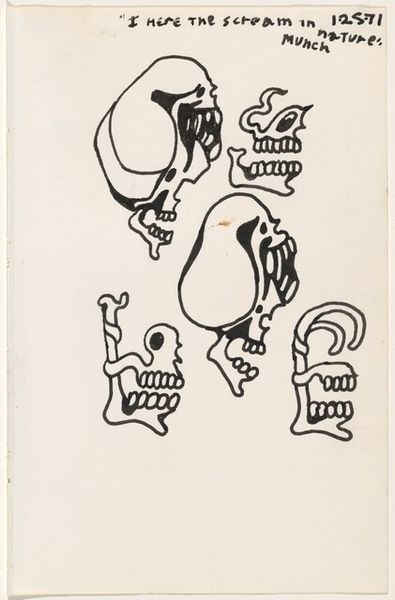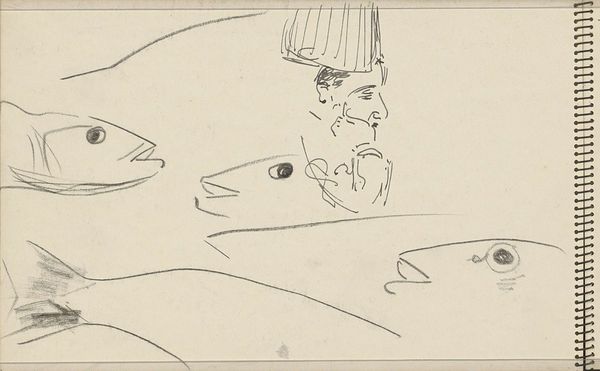
drawing, ink
#
portrait
#
art-deco
#
drawing
#
caricature
#
caricature
#
figuration
#
form
#
ink
#
line
#
portrait drawing
#
modernism
Copyright: Public Domain: Artvee
Curator: Well, here we have Mikuláš Galanda's "Woman with a jug" from 1930. It's an ink drawing, quite simple in its execution. Editor: My initial impression is whimsical and unsettling. The simplified, almost caricatured form, the upside-down presentation... it all gives a dreamlike, slightly disquieting feel. Curator: Absolutely. It's fascinating to consider Galanda’s focus on line and form. The apparent ease of the drawing belies a very deliberate process, emphasizing the basic materials: paper and ink. It’s as though he’s stripping away artifice to reveal something essential. We can imagine this drawing emerged from repetitive studio work, refining a vision with minimal fuss. Editor: And what does the jug symbolize, juxtaposed right on top of her head? Is it a symbol of domesticity, perhaps? Or perhaps fertility, given the rounded forms. The symbols have such an immediate appeal; they seem to connect directly with archetypes we all hold, across cultural lines. Curator: Good points! Consider the era; the 1930s were a time of great social and economic upheaval, and for many the means of production changed radically, it seems he is rejecting ornate classical forms for a sort of universal ideal based on common form, accessible resources and pared down means. It speaks to the artistic community re-evaluating their role in the midst of social transformation. Editor: True. The seemingly floating lines and shapes take on almost a surreal quality. The simple 'plus sign' scattered about the artwork might also evoke something heavenly, maybe this is some type of Madonna, but Galanda turned the classical form upside down and rendered it in lines! A strange choice, don't you think? Curator: But the simple forms also feel so contemporary, as though rendered by machines! These marks speak to repetition and process; perhaps the plus sign marks a series of tasks for him? Also remember he trained as a printer so, arguably, his approach to drawing would inevitably lean toward the reproducible. Editor: It all points to how artistic choices are deeply interwoven with personal, cultural and symbolic influences. I find myself questioning what lies beneath the immediate simplicity. Curator: Yes, what first seems like a minimalist exercise unveils so many complex undercurrents! Editor: It's amazing how Galanda, working with mere ink and paper, opens up these different avenues of thought for us to explore.
Comments
No comments
Be the first to comment and join the conversation on the ultimate creative platform.
